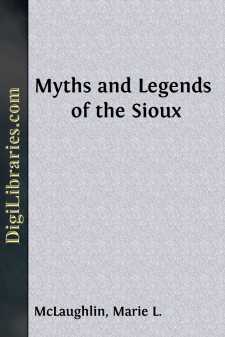Categories
- Antiques & Collectibles 13
- Architecture 36
- Art 48
- Bibles 22
- Biography & Autobiography 816
- Body, Mind & Spirit 145
- Business & Economics 28
- Children's Books 18
- Children's Fiction 14
- Computers 4
- Cooking 94
- Crafts & Hobbies 4
- Drama 346
- Education 58
- Family & Relationships 59
- Fiction 11831
- Foreign Language Study 3
- Games 19
- Gardening 17
- Health & Fitness 34
- History 1378
- House & Home 1
- Humor 147
- Juvenile Fiction 1873
- Juvenile Nonfiction 202
- Language Arts & Disciplines 89
- Law 16
- Literary Collections 686
- Literary Criticism 179
- Mathematics 13
- Medical 41
- Music 40
- Nature 179
- Non-Classifiable 1768
- Performing Arts 7
- Periodicals 1453
- Philosophy 66
- Photography 2
- Poetry 897
- Political Science 203
- Psychology 45
- Reference 154
- Religion 516
- Science 126
- Self-Help 86
- Social Science 82
- Sports & Recreation 34
- Study Aids 3
- Technology & Engineering 59
- Transportation 23
- Travel 463
- True Crime 29
Our website is made possible by displaying online advertisements to our visitors.
Please consider supporting us by disabling your ad blocker.
Myths and Legends of the Sioux
Categories:
Description:
Excerpt
FOREWORD
In publishing these "Myths of the Sioux," I deem it proper to state that I am of one-fourth Sioux blood. My maternal grandfather, Captain Duncan Graham, a Scotchman by birth, who had seen service in the British Army, was one of a party of Scotch Highlanders who in 1811 arrived in the British Northwest by way of York Factory, Hudson Bay, to found what was known as the Selkirk Colony, near Lake Winnipeg, now within the province of Manitoba, Canada. Soon after his arrival at Lake Winnipeg he proceeded up the Red River of the North and the western fork thereof to its source, and thence down the Minnesota River to Mendota, the confluence of the Minnesota and Mississippi Rivers, where he located. My grandmother, Ha-za-ho-ta-win, was a full-blood of the Medawakanton Band of the Sioux Tribe of Indians. My father, Joseph Buisson, born near Montreal, Canada, was connected with the American Fur Company, with headquarters at Mendota, Minnesota, which point was for many years the chief distributing depot of the American Fur Company, from which the Indian trade conducted by that company on the upper Mississippi was directed.
I was born December 8, 1842, at Wabasha, Minnesota, then Indian country, and resided thereat until fourteen years of age, when I was sent to school at Prairie du Chien, Wisconsin.
I was married to Major James McLaughlin at Mendota, Minnesota, January 28, 1864, and resided in Minnesota until July 1, 1871, when I accompanied my husband to Devils Lake Agency, North Dakota, then Dakota Territory, where I remained ten years in most friendly relations with the Indians of that agency. My husband was Indian agent at Devils Lake Agency, and in 1881 was transferred to Standing Rock, on the Missouri River, then a very important agency, to take charge of the Sioux who had then but recently surrendered to the military authorities, and been brought by steamboat from various points on the upper Missouri, to be permanently located on the Standing Rock reservation.
Having been born and reared in an Indian community, I at an early age acquired a thorough knowledge of the Sioux language, and having lived on Indian reservations for the past forty years in a position which brought me very near to the Indians, whose confidence I possessed, I have, therefore, had exceptional opportunities of learning the legends and folk-lore of the Sioux.
The stories contained in this little volume were told me by the older men and women of the Sioux, of which I made careful notes as related, knowing that, if not recorded, these fairy tales would be lost to posterity by the passing of the primitive Indian.
The notes of a song or a strain of music coming to us through the night not only give us pleasure by the melody they bring, but also give us knowledge of the character of the singer or of the instrument from which they proceed. There is something in the music which unerringly tells us of its source. I believe musicians call it the "timbre" of the sound. It is independent of, and different from, both pitch and rhythm; it is the texture of the music itself....


